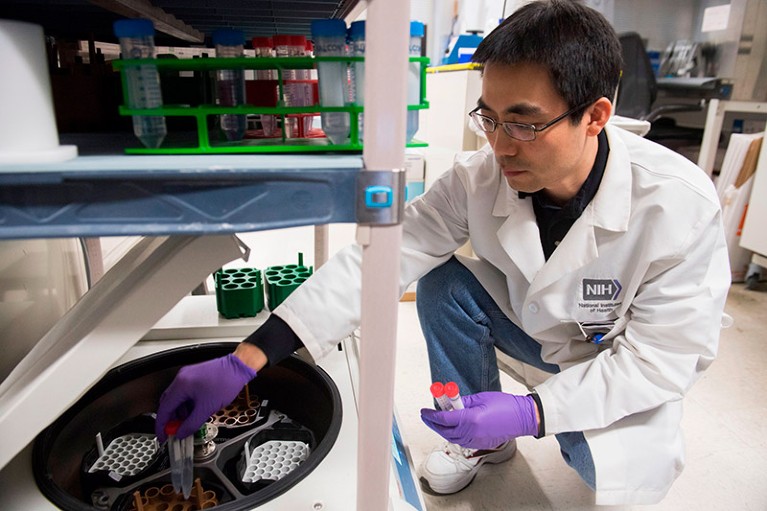
Biologist Benjamin Jin works on immunotherapy for human papillomavirus-positive cancers at the US National Cancer Institute in Bethesda, Maryland. The United States is the most prolific country in health-sciences research output in the Nature Index.Credit: Saul Loeb/AFP via Getty
The United States dominates global health-sciences publishing in the Nature Index Annual Tables 2023, the first to track output in high-quality medical journals. Major government and industry investment has cemented the country’s status as the world leader in health-sciences output. Its closest competitor, China, overtook the United States in natural-sciences output in 2022.
The Annual Tables rank nations, territories and institutions according to their Share, a metric that tracks the proportion of authors from an institution or region on each paper published in a year in the journals tracked in the Nature Index. The inclusion of 64 medical journals in this year’s tables adds 9,200 articles to the database for 2022 and allows publication output to be tracked across the health sciences as well as four existing natural-science categories (physical sciences, chemistry, Earth and environmental sciences and biological sciences, formerly referred to as life sciences).
In this first ranking of nations by health-sciences output, the US Share was 5,352, well above that of China, at 1,287, and the United Kingdom, at 963 (see ‘Leagues apart’). In the natural sciences, China leads with a Share of 19,373 and the United States is second, with 17,610.

Source: Nature Index
Health-science research is a major focus of federal spending in the United States, says Carol Robbins, a senior resources analyst at the US National Science Foundation’s National Center for Science and Engineering Statistics, in Alexandria, Virginia. “Federal funding for health-related research and development is almost as high as funding for defence-related research and development,” she says. The US National Institutes of Health (NIH) alone invested around US$42 billion in health and medical research in 2022, and is hoping to increase its budget to $51.1 billion in 2024. The pharmaceutical sector in the United States also spends big: in 2019, it invested an estimated $83 billion in research and development.
Health-research spending is seen as a vote-winner, says Jonathan Adams, chief scientist at the Institute for Scientific Information in London, the research arm of analytics firm Clarivate, which in April published a report on US research trends over the past 15 years. This found that national research funding prioritized the NIH over other government departments and agencies. Almost half of the US civilian research and development budget now goes into the NIH’s coffers, the report notes.
“There is a lot of money going into health — and the research that underpins” it, says Adams. He adds that health-research funding is a popular talking point for politicians on the campaign trail. Among the leading countries in health-sciences research, the United States outspends its closet competitors by a large margin (see ‘Healthy investment’).
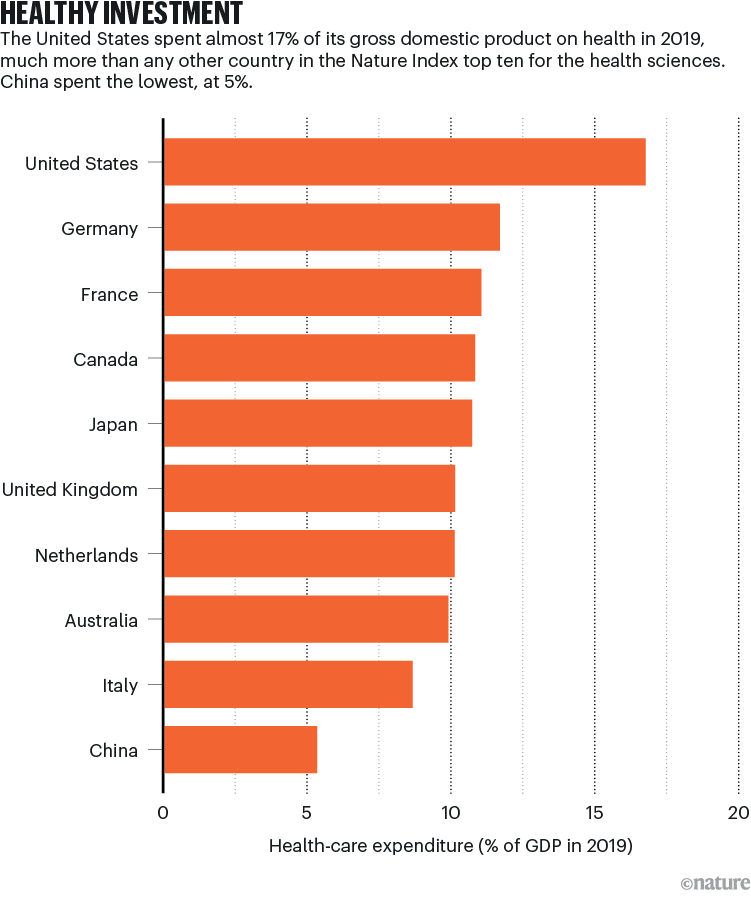
Source: WHO
The United States has a long history of investment and success in the medical sciences. Nearly one-quarter of its 406 Nobel prizes have been awarded for work in physiology or medicine. “If you’re good at something, and you have people who are winning Nobel prizes, and facilities that are recognized globally, then they get backed further because you can put forward some pretty coherent arguments about why you should get further investment,” Adams says.
But such strength in the health sciences doesn’t mean that the United States will always dominate. Adams says that China and India are likely to challenge the US lead in future. “That side of the Chinese research economy is going to expand,” he says.
Small nation strength
In terms of population size, the Netherlands is the smallest country to make it into the top ten in the health-science category. With roughly 18 million people, it has an outsized impact, ranking eighth in the Nature Index Annual Tables 2023, with a Share of 358 — above Japan and Italy.
Dutch institutional spending on medical research and development has leapt forward in recent years, from €67 million (US$72 million today) in 2019 to €235 million in 2020. This is a relatively large proportion of the country’s overall research budget, compared with other nations. The Netherlands ranks fourth globally in the number of patent applications for medical technology, sixth for biotechnology patents and eighth for pharmaceutical patents.
Prolific institution
At an institutional level, the United States dominates, taking eight of the leading ten positions in the 2023 Annual Tables for health sciences (see ‘Show of strength’) The University of Toronto in Canada is one exception, in third position after Harvard University in Cambridge, Massachusetts, and the NIH.
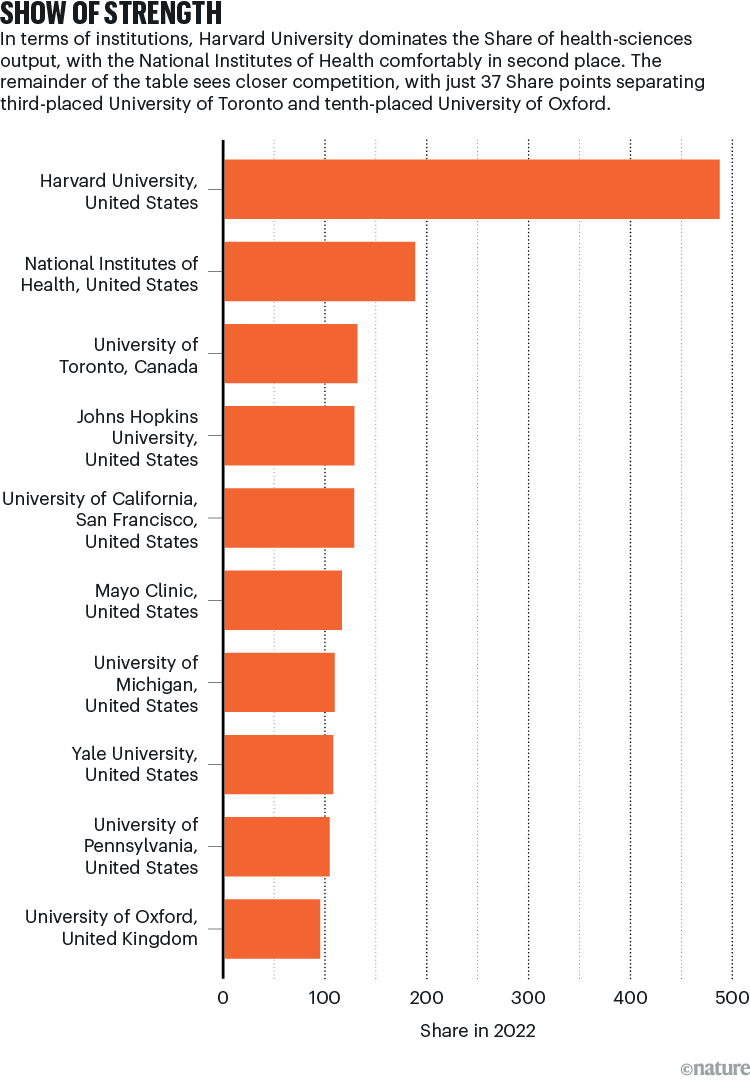
Leah Cowen, vice-president of research, innovation and strategic initiatives, says that several factors contribute to the University of Toronto’s success. One is a strong emphasis on collaboration; for example, 15 research hospitals belong to the Toronto Academic Health Science Network, which brings researchers and clinicians together to develop and test treatments. This year, University of Toronto researchers partnered with clinician scientists at the Hospital for Sick Children in Toronto to explore the use of magnetically guided robotic nanoscalpels to target the cancer cells in a type of brain tumour called glioblastoma. Another field that has benefited from collaboration is regenerative medicine: the University of Toronto has long established its legacy through pioneering work on stem cells, Cowen says.
The university has also fostered initiatives focused on ‘grand questions’ that bring together researchers from diverse disciplines to tackle subjects such as heart failure, personalized medicine, ageing and the role of cell organelles called mitochondria in human health.
Nature Index Annual Tables 2023: China tops natural-science table
“We’re really committed to engaging on the full spectrum of research, all the way from state-of-the-art pioneering fundamental research through to clinical research, knowledge translation, clinical trials, drug discovery and bio-innovation,” Cowen says. And that’s not limited to faculty members; she says the university encourages students to explore commercial opportunities and entrepreneurship, as well.
Cowen says Toronto has won substantial government grants, such as Can$200 million (US$147 million) from the Canada First Research Excellence Fund for the university’s Acceleration Consortium, which is exploring the use of artificial intelligence and robotics in drug discovery and new materials design. However, the outlook for funding in health-science research is not as promising in Canada as it is in the United States. In real terms, Cowen says, overall federal funding for health-science research has not kept pace with inflation.
There is plenty of advocacy for improving Canadian funding for health-science research, says Cowen. “Despite limited investment, we’re really punching above our weight,” she says. “We’re achieving exceptional impact, so further investment would yield extraordinary additional reward.”






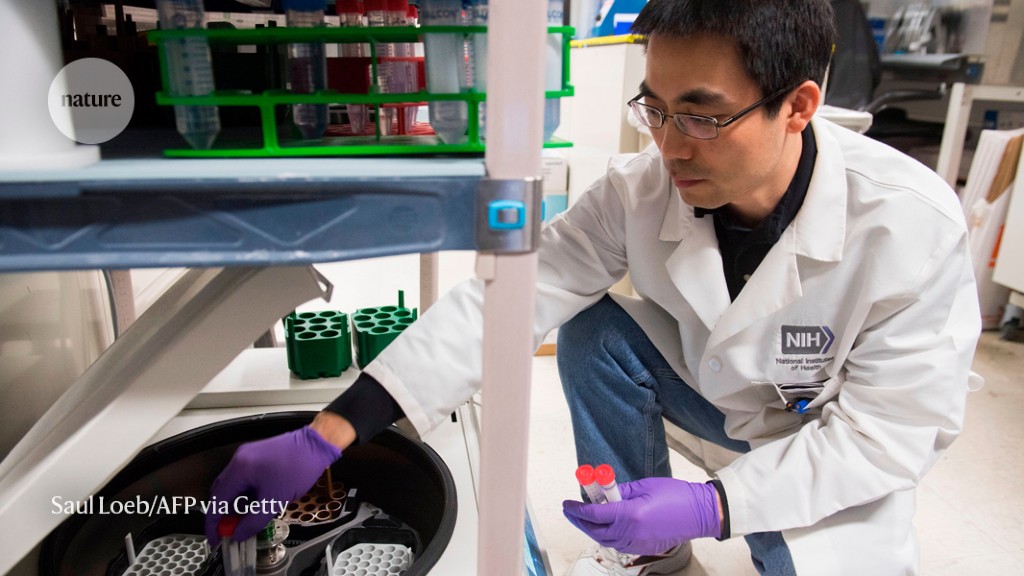
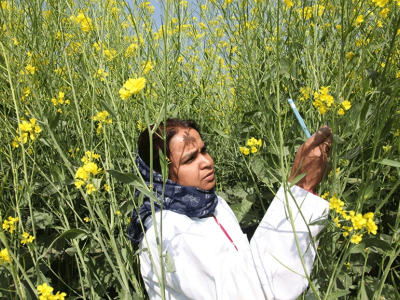
More News
Author Correction: Stepwise activation of a metabotropic glutamate receptor – Nature
Changing rainforest to plantations shifts tropical food webs
Streamlined skull helps foxes take a nosedive